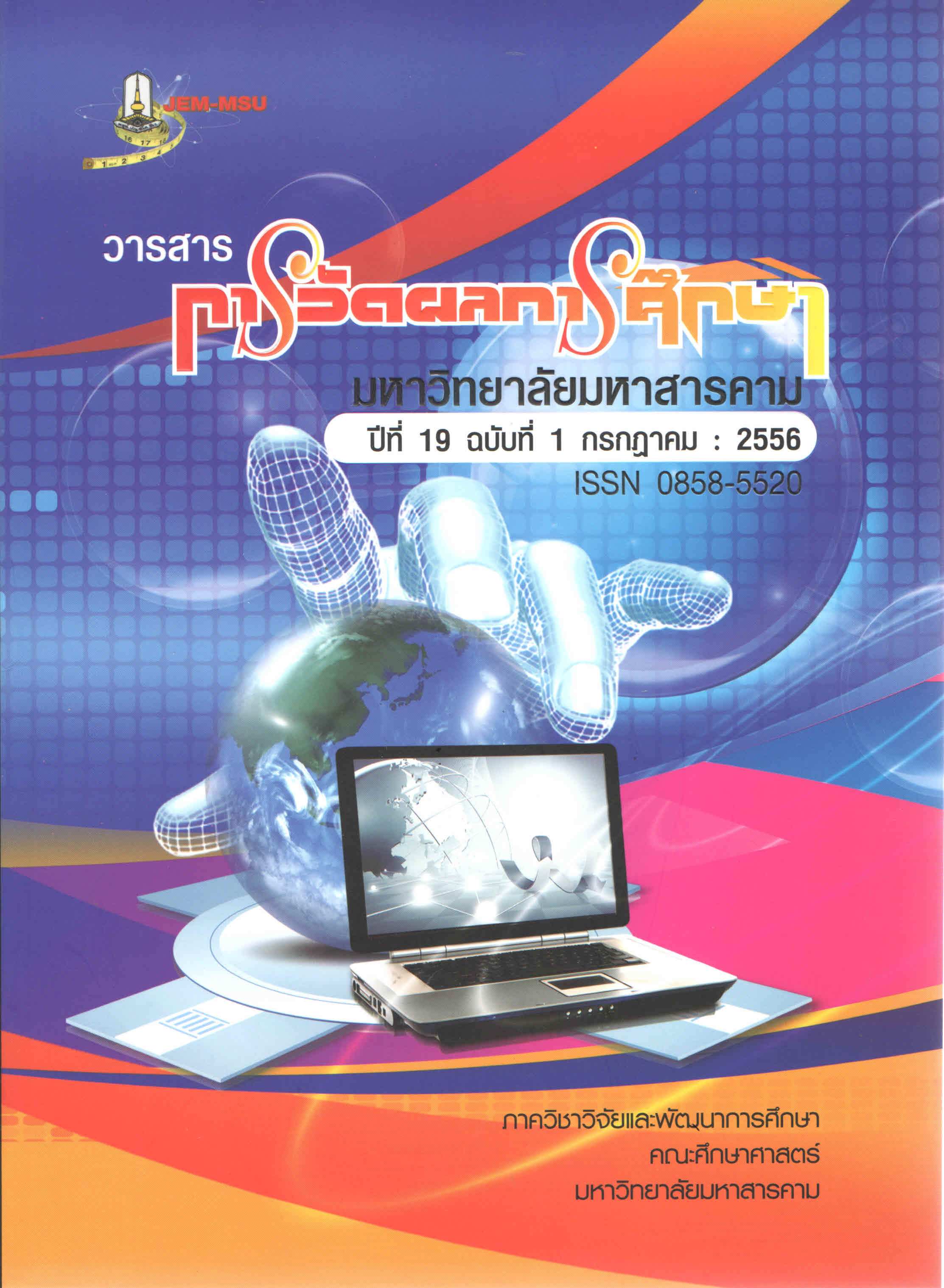A Comparisons of Analytical Thinking and Creative Thinking in Science Ability of Matthayomsueksa 3 students under the Secondary of Educational Service Area office 24 with Different Learning Styles.
Main Article Content
Abstract
This study aimed 1) to study analytical thinking and creative thinking ability of
Matthayomsueksa 3 students under the Secondary of Educational Service Area office 24 Kalasin
Province, and 2) to compare analytical thinking abilities and creative thinking in science of
students with different learning style. The sample consisted of 390 Matthayomsueksa 3 students
under the secondary of educational service area office 24 in the second semester of the academic
year 2011, obtained using Multi–stage Random Sampling Technique. Two types of the instruments
used for collecting data. Type one is a 5–rating–scale inventory on learning styles, devided into 6
styles : independent, avoidance, collaborative, dependent, competitive and participant learning
styles, 8 items each, with a total of 48 items with discriminating powers (rxy) ranging .26 - .68 and
reliability of .87. Type two consisted of two tests : test one was a 45 items, 5 choice a subjective
of analytical thinking abilities with item difficulties ranging .35 - .76 item discrimination ranging .28 -
.80 and reliability of .93 ; test 2 was a subjective test of creative thinking in science devided into 3
aspects : fluency, flexibility and originality. The statistics use for analyzing the collected data were
mean and standard deviation ; and F-test (One – way MANOVA) was employed for testing
hypotheses.
The results of the study could be summarized as follows :
1. Matthayomsueksa 3 students had the highest mean score on analytical thinking
abilities as a whole at 30.67 out of 45 total scores. When each learning style was considered, it
was found that the collaborative learning style had a highest mean score at 32.05 and the highest
mean score on creative thinking as a whole at 42.06 . When each learning style was considered, it
was found that the collaborative learning style had the highest mean score at 43.60 .
2.The students with different learning style showed differently analytical thinking
abilities and creative thinking in science of the .05 level of significance. When individual paires
were compared, the following were found :
2.1 The students with collaborative learning style had a higher mean score
analytical thinking abilities than those with dependent and avoidance at the .05 level of
significance, the students with competitive learning style had a higher mean score analytical
thinking abilities than those with dependent and avoidance, at the .05 level of significance, the
students with independent learning style had higher mean score analytical thinking abilities than
those with dependent and avoidance, at the .05 level of significance .
2.2 The students with collaborative learning style had higher mean score in the
creative thinking in science than those with dependent and avoidance learning style at the .05
level of significance. The students with participative learning style had a higher mean score in the
creative thinking in science than those with dependent and avoidance learning style at the .05
level of significance. The students with independent learning style had a higher mean score in the
creative thinking in science than those with dependent learning style at the .05 level of
significance and the students with competitive learning style a higher mean score in the creative
thinking in science than those with dependent learning style at the .05 level of significance.
Article Details
The content and information contained in the published article in the Journal of Educational Measurement Mahasarakham University represent the opinions and responsibilities of the authors directly. The editorial board of the journal is not necessarily in agreement with or responsible for any of the content.
The articles, data, content, images, etc. that have been published in the Journal of Educational Measurement Mahasarakham University are copyrighted by the journal. If any individual or organization wishes to reproduce or perform any actions involving the entirety or any part of the content, they must obtain written permission from the Journal of Educational Measurement Mahasarakham University.

